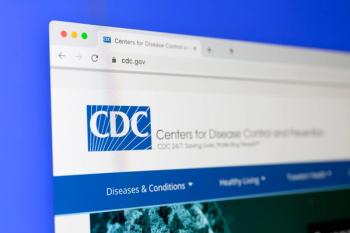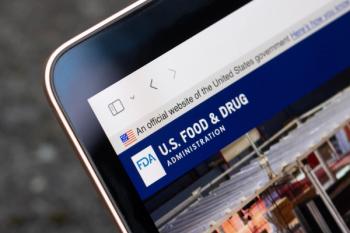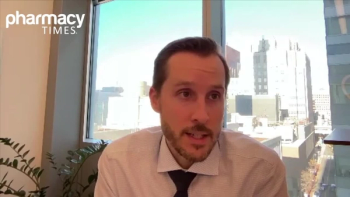
Little Pills, Big Risks: The Untold Dangers of Referring to Low-Dose Aspirin as 'Baby Aspirin’
Aspirin, known as acetylsalicylic acid, has been marketed in ways that have de-emphasized potential risks to children.
Abstract
Aspirin, chemically known as acetylsalicylic acid, has enjoyed considerable popularity as a therapeutic agent for decades. Low-dose aspirin, commonly referred to as "baby aspirin" is a specific formulation of acetylsalicylic acid that is typically available in an 81mg tablet. Aspirin has been used both in primary and secondary prevention for cardiovascular disorders due to its antiplatelet and anti-inflammatory effects. The potential misnomer of low-dose aspirin as “baby aspirin” can lead to misuse and unintended consequential adverse effects (AEs).The misuse of these drugs has led to serious, potentially life-threatening conditions, including gastrointestinal bleeding, cerebral hemorrhage, and Reye syndrome in pediatric patients. This brief review explores a crucial aspect of patient safety regarding the correct use of low-dose aspirin, as many studies have focused on the 'beneficial aspects' and ignored the toxic effects until now. The review highlights the contributing factors to the hazards associated with low-dose aspirin, including misleading marketing strategies and limited health literacy among consumers. Health care professionals and paramedics can play a crucial role in mitigating these hazards by promoting clear communication and educating patients about the proper usage of aspirin. In conclusion, health care professionals must strive to ensure optimal patient safety by consistently evaluating and revising guidelines based on the latest research on low-dose aspirin and educating patients to minimize the risk of potential AEs.
Introduction
Acetylsalicylic acid, commonly known as Aspirin, has been widely utilized in various medical domains because of its pain-relieving, antipyretic, anti-platelet, and anti-inflammatory properties. Aspirin irreversibly inhibits the activity of the enzyme called cyclooxygenase (COX), blocking the synthesis of prostaglandin and thromboxane.1 Low-dose aspirin, commonly known as “baby aspirin,” is a medication that contains 81 milligrams of aspirin. Aspirin is also a platelet aggregation inhibitor that works by inhibiting thromboxane A2 synthesis, thereby preventing the formation of blood clots.2
It is worth noting that the term "baby aspirin" originated from the reduced dose of aspirin that was previously administered to children, although it is no longer recommended.While the modern terminology for lower doses of aspirin is "low-dose aspirin," it has been observed that many individuals still use the term "baby aspirin" to refer to these doses. Low-dose aspirin can be used in both primary and secondary prevention of cardiovascular disease (CVD). Primary prevention refers to the use of aspirin when a patient is at a higher risk for heart disease due to factors such as family history of CVD, age, or hyperlipidemia. On the other hand, secondary prevention refers to the use of aspirin after a patient has already been diagnosed with CVD in order to help prevent a recurrence.2-3
However, there are a number of adverse events linked to chronic use of low-dose aspirin, out of which extracranial bleeding events, particularly gastrointestinal bleeding, hypersensitivity reaction, and Reye’s syndrome are the most clinically significant.4 Additionally, aspirin increases the risk of intracerebral hemorrhage, a rare but potentially serious condition.5 Figure 1 presents a comparative analysis of cardiovascular events observed between low-dose aspirin and placebo groups.6 The findings suggest that the occurrence of ischemic stroke events has been significantly higher than other events. However, no significant difference was found between the low-dose aspirin and placebo groups.
Historical Background
Salicylates, a type of pain-relieving chemical that later was acetylated to form aspirin, have been derived from the bark of the willow tree. The use of remedies derived from the willow tree for managing pain can be traced back to the Sumerian civilization, which existed as early as 4000 years ago. Hippocrates, the father of medicine, also used salicylates for managing pain and fever. He even recommended the use of tea brewed from the willow tree bark for pain management during childbirth.7
In 1763, Reverend Edward Stone conducted the first clinical trial of its kind that studied the efficacy of willow bark powder for treating fever. Nearly a century later, the therapeutic effects of willow bark powder were investigated for its potential in acute rheumatism treatment.8,9
Salicin, the Latin word for willow, was first used by Johann Buchner in 1828. Henri Leroux later used it to treat rheumatism after isolating it in a crystalline form in 1829. In the 19th century, the Heyden Chemical Company became the first to mass-produce salicylic acid commercially. However, it was not until 1899 that Bayer registered and marketed a modified version of salicylic acid under the trade name aspirin. Despite its availability since the early 1900s, its true mode of action was not known until the late 1970s.9-11
Marketing Impact
The marketing strategies employed to promote low-dose aspirin usage have been identified as a significant contributing factor to its misuse among consumers. For instance, Walmart pharmacies displayed prominent warning labels highlighting the high incidence of heart attacks expected to be faced by Americans. Similarly, numerous boxes of low-dose Bayer aspirin were packaged in 3-foot-tall cartons embossed with the branding of both the American Heart Association (AHA) and Bayer. The primary objective behind promoting the use of "baby aspirin" was to minimize the risk of heart attacks. However, the message conveyed through advertisements such as these, as well as television commercials, was interpreted by the general public as an indication that "baby aspirin" was a harmless, candy-like option for managing heart attacks. Some advertisements imply that consuming "baby aspirin" daily is advantageous for anyone above 40 years of age, which has been proven to be misleading according to more recent clinical trial findings.12
In certain supermarkets, it has been observed that aspirin products labeled as "half-dose" or "daily adult" are available for purchase. However, it has been noted that these products carry a warning that excessive use can cause stomach injury. This marketing strategy can be misleading and confusing for even a well-informed and educated consumer.13 It is worth noting that several well-known internet websites have adopted the term "baby aspirin" instead of the more precise alternatives such as "low-dose aspirin" or "aspirin 81mg." This practice, observed in popular websites such as WebMDand Health.gov, raises concerns as it may potentially mislead a significant number of people.14-16
Implications for Patient Safety
During the early days of its introduction in the market, baby aspirin garnered a significant amount of attention. Aspirin, which was primarily used as an analgesic and antipyretic drug, remained a common medication until a few decades ago. Its usage was widespread, encompassing people of all ages, from infants to the elderly. It was later discovered that certain viruses, such as the influenza virus or varicella-zoster virus which causes chickenpox, have the potential to trigger Reye syndrome in children when they are given aspirin.
Reye syndrome, a serious condition that can be fatal if left untreated, has been found to have various etiologies, such as an intrinsic toxin that disrupts the mitochondrial system, dysfunctional lipid and ammonia metabolism, an extrinsic toxin that alters the patient's response to bacterial or viral prodrome, and genetic susceptibility.17 However, the only agent that has been statistically proven to cause Reye syndrome is the intake of acetylsalicylic acid (aspirin) during the viral prodromal phase in young children.18 Reye syndrome can cause metabolic noninflammatory encephalopathy and fatty degeneration of the liver. This syndrome typically occurs after a viral infection and is characterized by severe and prolonged vomiting, followed by encephalopathy that can advance to coma or even lead to death.1,11,17-19
Currently, administering aspirin to children is not recommended by medical professionals. However, despite the implementation of updated guidelines, some individuals may still choose to administer aspirin to their children when they are ill. Yet, it is important to note that this practice is not advised and may pose potential risks to a child's health.18
In Kenya, there have been documented instances of the utilization of "baby" or "junior" aspirin formulations. As a result, there have been growing apprehensions regarding the possibility of aspirin overdose in feverish young Kenyan individuals, which serves as an example of the potential problems that can occur related to this type of marketing.19-20
Advocating for Clarity in Communication
Limited research has been conducted to explore the impact of patients' health literacy on care transitions, despite its significant contribution to effective health communication. Patients with low health literacy encounter difficulties in reading prescription drug labels and are often less informed about disease self-management techniques. Such patients are at a higher risk of hospitalization and mortality. Addressing health literacy as part of the care transition process is thus vital for improved health outcomes.22-24
Health care professionals can significantly contribute to promoting clear communication with patients regarding the use of harmful drugs. It is imperative to avoid ambiguous language and the use of words with dual meanings, such as "baby aspirin." Instead, "aspirin 81 mg" or "low-dose aspirin" should be used while prescribing or counseling patients. Such clear and unambiguous communication can help ensure patient safety and prevent any potential confusion or misunderstanding. In cases where low-dose or “baby aspirin” is prescribed, it is imperative that the prescriber and pharmacist provide clear and concise education to the patient emphasizing that this medication should not be administered to infants or children under the age of 12 years. To ensure safe pharmaceutical use and achieve optimal health outcomes, effective communication between the pharmacist and patient is of utmost importance.25
Conclusion
Low-dose aspirin, also known as baby aspirin, reduces the risk of clot formation by inhibiting COX activity. It is effective in preventing cardiovascular events, but it also increases the risk of serious bleeding and intracerebral hemorrhagic events. Misconceptions and confusion surrounding the term "baby aspirin" have led to its contraindicated use in infants and young children, causing Reye Syndrome. Clear communication regarding its use is crucial, and guidelines should be consistently evaluated and revised based on the latest research to ensure optimal patient safety.
REFERENCES
Vane JR, Botting RM. Aspirin and other Salicylates. London: Chapman and Hall Medical Publishers. 1992.
Patrono C. Thromboxane synthesis inhibitors and receptor antagonists. Thromb Res Suppl. 1990;1(57):15-23. doi:10.1016/0049-3848(90)90387-R
Baby B. What is Baby Aspirin? A Simple Guide to its Uses and Benefits. BirdRock Baby. Accessed January 1, 2024. https://birdrockbaby.com/blogs/moms-corner/what-is-baby-aspirinhttps://birdrockbaby.com/blogs/moms-corner/what-is-baby-aspirin
Cloud GC, Williamson JD, Thao LTP, et al. Low-Dose Aspirin and the Risk of Stroke and Intracerebral Bleeding in Healthy Older People: Secondary Analysis of a Randomized Clinical Trial. JAMA Netw Open. 2023;6(7):e2325803. doi:10.1001/jamanetworkopen.2023.25803
Derry S, Loke YK. Risk of gastrointestinal haemorrhage with long term use of aspirin: meta-analysis. BMJ. 2000.11;321(7270):1183-1187. doi:org/10.1136/bmj.321.7270.1183
He J, Whelton PK, Vu B, Klag MJ. Aspirin and risk of hemorrhagic stroke: a meta-analysis of randomized controlled trials. JAMA. 1998;280(22):1930-1935. doi:10.1001/jama.280.22.1930
Tawfeek N, Mahmoud MF, Hamdan DI, Sobeh M, Farrag N, Wink M, El-Shazly AM. Phytochemistry, Pharmacology and Medicinal Uses of Plants of the Genus Salix: An Updated Review. Front Pharmacol. 2021;12:593856
Miner J, Hoffhines A. The discovery of aspirin's antithrombotic effects. Tex Heart Inst J. 2007;34(2):179-86.
Arif H, Aggarwal S. Salicylic Acid (Aspirin) [Updated 2023 Jul 5]. In: StatPearls [Internet]. Treasure Island (FL): StatPearls Publishing; 2023.
https://www.ncbi.nlm.nih.gov/books/NBK519032/ Lichterman BL. Aspirin: The Story of a Wonder Drug. BMJ. 2004;329(7479):1408.
Desborough MJR, Keeling DM. The aspirin story - from willow to wonder drug. Br J Haematol. 2017;177(5):674–683. doi:10.1111/bjh.14520
Baby and Regular-Strength Aspirin Work Equally Well to Protect Heart Health. American College of Cardiology. Accessed January 2, 2024. https://www.acc.org/about-acc/press-releases/2021/05/14/19/57/baby-and-regular-strength-aspirin-work-equally-well-to-protect-heart-health
Soumerai SB, Ross-Degnan D, Kahn JS. Effects of Professional and Media Warnings about the Association between Aspirin Use in Children and Reye’s Syndrome. The Milbank Quarterly. 1992;70(1):155. doi:10.2307/3350088
WebMD. (n.d.). Baby aspirin oral: Uses, side effects, interactions, pictures, warnings & dosing. WebMD. https://www.webmd.com/drugs/2/drug-21688/baby-aspirin-oral/details
Talk with your doctor about taking aspirin to prevent disease. Talk with Your Doctor About Taking Aspirin to Prevent Disease - MyHealthfinder. (n.d.). https://health.gov/myhealthfinder/health-conditions/heart-health/talk-your-doctor-about-taking-aspirin-prevent-disease
Galewitz P. Heart Association Puts Halt to Bayer’s Giant Displays Of Baby Aspirin. KFF Health News. Published March 10, 2020. Accessed January 1, 2024. https://kffhealthnews.org/news/heart-association-puts-halt-to-bayers-giant-displays-of-baby-aspirin/
Rotfeld HJ. Health information consumers can't or don't want to use. JCA. 2009;43(2):373-377. doi:10.1111/j.1745-6606.2009.01145.x
Noor A, Gradidge E. A Case of Reye Syndrome Caused by Influenza A Virus. Ochsner J. 2018 Winter;18(4):425-427. doi:10.31486/toj.18.0098
A Doctor Explains Why Baby Aspirin Isn’t Actually Meant For Babies | Rachael Ray Show. www.rachaelrayshow.com. Published April 5, 2019. Accessed January 1, 2024. https://www.rachaelrayshow.com/articles/a-doctor-explains-why-baby-aspirin-isnt-actually-meant-for-babies
Duda K. Why Kids Shouldn’t Take Aspirin. Verywell Health. Published February 16, 2015. Accessed January 1, 2024. https://www.verywellhealth.com/why-kids-shouldnt-take-aspirin-770789
Geetha HS, Shah S, Scott J. Respiratory distress after potentially fatal aspirin overdose: when to intubate? Chest. 2022;162(4):A1106.
English M, Marsh V, Amukoye E, et al. Chronic salicylate poisoning and severe malaria. Lancet. 1996;347:1736-1737. doi:10.1016/S0140-6736(96)90809-0
Gaziano JM, Brotons C, Coppolecchia R, et al. Use of aspirin to reduce risk of initial vascular events in patients at moderate risk of cardiovascular disease (ARRIVE): a randomised, double-blind, placebo-controlled trial. Lancet. 2018;392(10152):1036-1046. doi:10.1016/s0140-6736(18)31924-x
Sudore RL, Yaffe K, Satterfield S, et al. Limited literacy and mortality in the elderly: The Health, Aging, and Body Composition Study. J Gen Intern Med. 2006;21(8):806-812. doi:10.1111/j.1525-1497.2006.00539.x
Baker DW, Wolf MS, Feinglass J, Thompson JA, Gazmararian JA, Huang J. Health literacy and mortality among elderly persons. Arch Intern Med. 2007;167(14):1503-1509. doi:10.1001/archinte.167.14.1503
Newsletter
Stay informed on drug updates, treatment guidelines, and pharmacy practice trends—subscribe to Pharmacy Times for weekly clinical insights.














































































































































































































